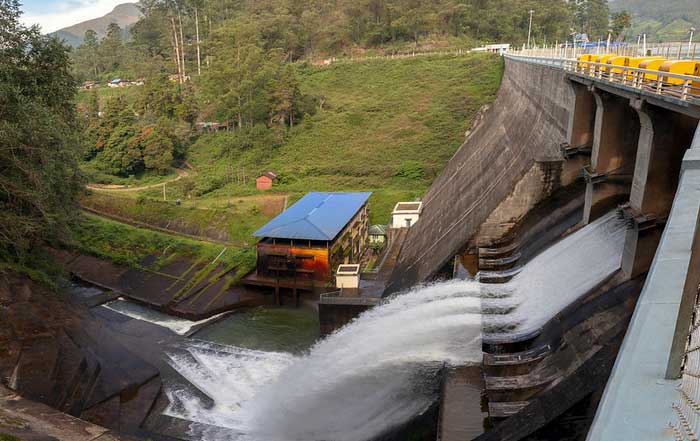Fresh water scarcity and water shortages are pressing issues that threaten the very fabric of human life. As the world continues to grapple with the challenges of climate change, population growth, and industrialization, the availability of clean and potable water is becoming increasingly precarious.
Fresh water scarcity is not a new phenomenon, but it has become a more pressing issue in recent years due to the combined effects of climate change, population growth, and industrialization. The World Health Organization (WHO) estimates that by 2025, half of the world's population will be living in water-stressed areas, with two-thirds of the world's population experiencing water scarcity for at least one month a year. This trend is exacerbated by the fact that the world's population is expected to reach 9.7 billion by 2050, with the majority of this growth occurring in areas already experiencing water stress.
The Impact of Climate Change
Climate change is a significant contributor to fresh water scarcity. Rising temperatures and changing precipitation patterns are altering the hydrological cycle, leading to more frequent and severe droughts, floods, and storms. These extreme weather events disrupt water supply systems, damage infrastructure, and contaminate water sources, making it difficult for communities to access clean water. For instance, the 2022 drought in the Western United States was the worst in over a century, affecting millions of people and costing billions of dollars in economic losses.
Population Growth and Urbanization
Population growth and urbanization are also major drivers of fresh water scarcity. As cities expand, they consume more water for domestic, industrial, and agricultural purposes. This increased demand often outstrips the capacity of local water systems, leading to water shortages and contamination. For example, the city of Cape Town, South Africa, was on the brink of "Day Zero," where taps would run dry due to a severe drought and water mismanagement.
Industrialization and Agriculture
Industrialization and agriculture are significant water consumers, accounting for a substantial portion of global water use. Industrial processes, such as cooling systems and manufacturing, require large amounts of water, while agricultural practices, particularly in irrigated farming, are highly water-intensive. For instance, the production of a single cotton t-shirt requires approximately 2,700 liters of water. These industries often rely on groundwater, which is being depleted at an alarming rate, leading to water table declines and saltwater intrusion into aquifers.
Fresh Water Scarcity Timeline
Severe Western US Drought
Worst drought in over a century, affecting millions and costing billions.
WHO Projection
Half of world's population living in water-stressed areas.
Population Growth
World population expected to reach 9.7 billion.
Water Shortages and Economic Impact
Water shortages have significant economic implications. They can disrupt industrial production, leading to job losses and economic downturns. For instance, the 2011 drought in Texas, USA, caused a $5.2 billion loss in agricultural production and $1.2 billion in economic losses. Water shortages also affect public health, as contaminated water sources can lead to outbreaks of waterborne diseases, such as cholera and typhoid fever.
Strategies for Mitigation
Several strategies are being implemented to mitigate the effects of fresh water scarcity. These include:
Water Conservation and Efficiency
Water conservation and efficiency measures are crucial in reducing water consumption. These measures include installing low-flow showerheads and toilets, using water-efficient appliances, and implementing water-saving irrigation systems in agriculture. For example, the city of Los Angeles has implemented a water conservation program that has saved over 100 million gallons of water annually.
Desalination and Water Reuse
Desalination and water reuse are technologies that can help provide additional water supplies. Desalination involves removing salt from seawater or brackish water to make it potable. Water reuse involves treating wastewater to a high enough standard for non-potable uses, such as irrigation or industrial processes. For instance, the city of Singapore has implemented a comprehensive desalination and water reuse program, which provides 30% of its water supply.
Water Storage and Management
Effective water storage and management are essential for ensuring water security. This includes building and maintaining reservoirs, dams, and aquifers, as well as implementing efficient water distribution systems. For example, the state of California, USA, has invested heavily in water storage projects, including the California WaterFix, which aims to improve water supply reliability and reduce the risk of droughts.
Sustainable Agriculture and Irrigation Practices
Sustainable agriculture and irrigation practices can significantly reduce water consumption. These practices include precision irrigation, crop rotation, and the use of drought-resistant crops. For instance, the use of drip irrigation in agriculture can reduce water consumption by up to 90% compared to traditional flood irrigation.
Public Education and Awareness
Public education and awareness campaigns are vital in promoting water conservation and responsible water use. These campaigns can include community outreach programs, school education initiatives, and social media campaigns. For example, the United Nations has launched the "Water for Life" campaign, which aims to raise awareness about the importance of water and the need for sustainable water management.
Future Outlook
Fresh water scarcity and water shortages are pressing global issues that require immediate attention. The combination of climate change, population growth, and industrialization is exacerbating the problem, leading to significant economic and public health impacts. However, there are strategies available to mitigate these crises, including water conservation, desalination, water reuse, sustainable agriculture, and public education. By implementing these measures, we can work towards a more sustainable and resilient future, ensuring that clean water remains accessible to all.
As the world continues to grapple with the challenges of fresh water scarcity, it is essential to stay informed about the latest developments and trends in water management. The future outlook for water security is uncertain, with many factors influencing the availability and quality of fresh water. However, by adopting sustainable practices and technologies, and through public education and awareness campaigns, we can work towards a more resilient and sustainable future, ensuring that clean water remains accessible to all.

